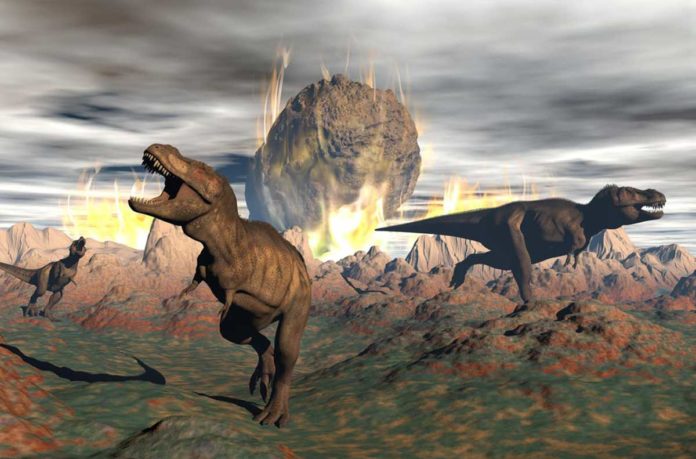An asteroid crashed into Earth 66 million years ago, wiping out all nonavian dinosaurs and most life on the planet.
Now, scientists at the University of Texas at Austin hypothesized that scenario. They have pieced together the first day of the dinosaurs’ demise by finding hard evidence in the hundreds of feet of rocks that filled the impact crater within the first 24 hours after impact.
They found that the rock samples includes bits of charcoal, jumbles of rock brought by the tsunami’s backflow and conspicuously absent sulfur.
Sean Gulick, a research professor at the University of Texas Institute for Geophysics (UTIG) at the Jackson School of Geosciences, said, “They are all part of a rock record that offers the most detailed look yet into the aftermath of the catastrophe that ended the Age of Dinosaurs. It’s an expanded record of events that we were able to recover from within ground zero.”
“It tells us about the impact processes from an eyewitness location.”
The study is based on prior work which describes that the roughly 10-mile-wide Chicxulub asteroid, which hit in the Gulf of Mexico near the Yucatán Peninsula, pushed rock up from 6 miles below the surface to form the peak ring. Those rocks traveled approximately 20 miles in a few minutes, first being pushed outward from the impact, then rebounding upward above the Earth’s surface and finally collapsing outward to form a ring of peaks around the center of the impact.
“Just one day deposited about 425 feet of material — a rate that’s among the highest ever encountered in the geologic record. This breakneck rate of accumulation means that the rocks record what was happening in the environment within and around the crater in the minutes and hours after impact and give clues about the longer-lasting effects of the impact that wiped out 75% of life on the planet.”
According to scientists, the asteroid hit with the equivalent power of 10 billion atomic bombs of the size used in World War II. The impact wiped out millions of trees and plants and also triggered a massive tsunami.
The biomaterials within the rock samples such as charcoal and a chemical biomarker were associated with soil fungi within or just above layers of sand that shows signs of being deposited by resurging waters. This suggests that the charred landscape was pulled into the crater with the receding waters of the tsunami.
The study also supports a theory that the impact may have vaporized the sulfur-bearing minerals present at the impact site and released it into the atmosphere, where it wreaked havoc on the Earth’s climate, reflecting sunlight away from the planet and causing global cooling.
Jay Melosh, a Purdue University professor and expert on impact cratering, said: “that finding evidence for wildfire helps scientists know that their understanding of the asteroid impact is on the right track.”
“It was a momentous day in the history of life, and this is very clear documentation of what happened at ground zero.”
Gulick said, “However, the impact caused mass destruction at the regional level, but it was this global climate change that caused a mass extinction, killing off the dinosaurs along with most other life on the planet at the time. The real killer has got to be atmospheric.”
The research was published in the Proceedings of the National Academy of Sciences on Sept. 9 and funded by several international and national support organizations, including the National Science Foundation.
